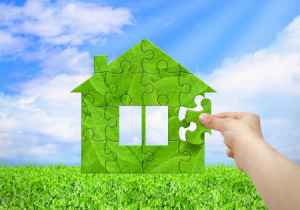 You might think that stadiums, dormitories, and office buildings are just gigantic man-made structures used to house events or protect us from the elements, but that isn’t exactly the case. Sure, we live in them and work in them, but buildings also have a direct impact on the environment.
You might think that stadiums, dormitories, and office buildings are just gigantic man-made structures used to house events or protect us from the elements, but that isn’t exactly the case. Sure, we live in them and work in them, but buildings also have a direct impact on the environment.
To put things into perspective, did you know that buildings account for 39% of the total energy use in the United States? Not cars, not airplanes, or burning fossil fuels — buildings. If that doesn’t surprise you, consider the fact that buildings account for 68% of America’s total electricity consumption and 38% of the country’s carbon dioxide emissions. If those numbers seem high, you aren’t alone. It’s hard to believe that everything from banks, to apartments, and even the skyscrapers downtown are having a negative impact on Mother Nature.
Fortunately, it isn’t all bad news. Sustainable building options like LEED (Leadership in Energy and Environmental Design) certification are helping make a positive impact. In fact, a recent study found that buildings with LEED certification “have 34 percent lower CO2 emissions, consume 25 percent less energy and 11 percent less water, and have diverted more than 80 million tons of waste from landfills.” Pretty amazing, right?
Here at McNeil Engineering, we’re committed to providing sustainable, eco-friendly, engineering solutions. Whether you’re looking to cut back on water use with improved landscaping, or are ready to start work on a new project, we’re here to help. Set yourself apart from the competition and go green now. You don’t want to be left in the dust. http://mcneilengineering.com








